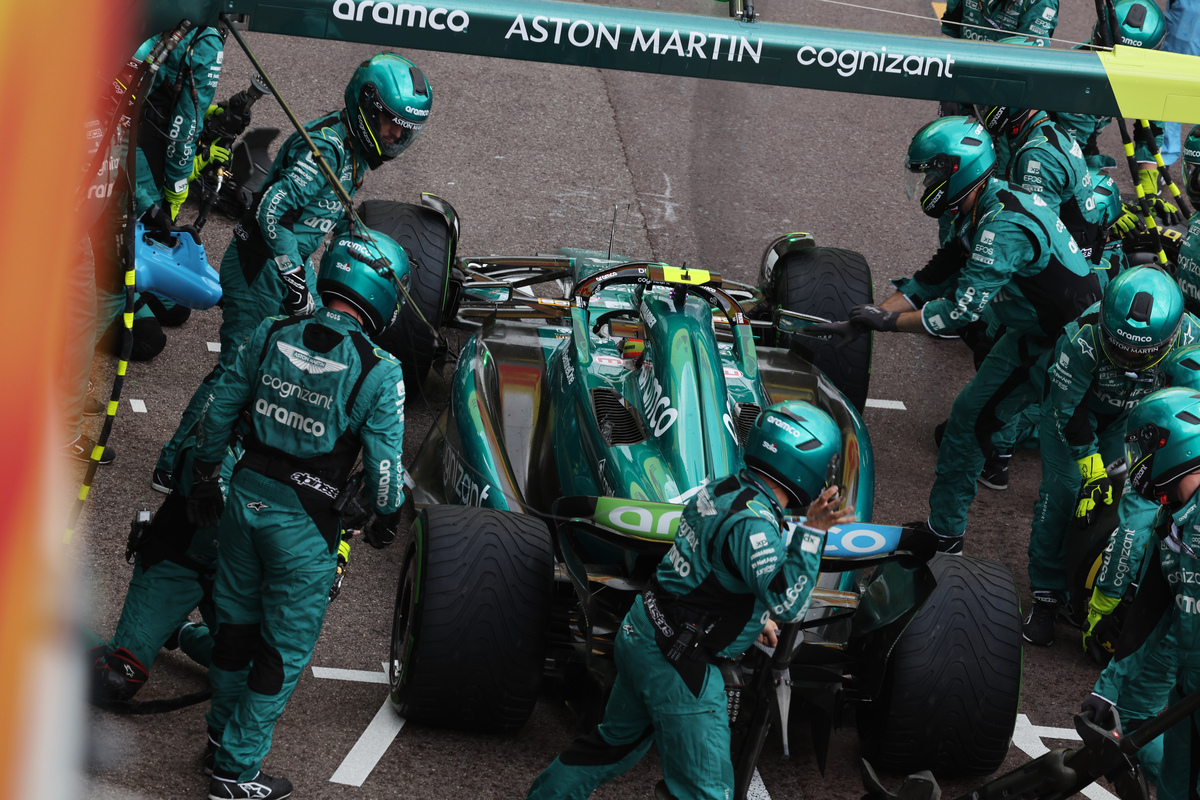

Aston Martin team principal Mike Krack does not believe the decision to fit slick tyres as rain fell cost Fernando Alonso the chance to win the Monaco GP.
The Spaniard was running second and, potentially, in with a shot of the race lead had the team opted for intermediate tyres as the rain began to fall in the principality.
Rain arrived on Monaco on Lap 51 of 78, initially dousing the northern end of the circuit, from Mirabeau to Portier.
Valtteri Bottas and Zhou Guanyu were the first to pit for intermediate tyres, though the bulk of the field waited until Lap 54.
When they did, Alonso was among their number, but opted for slick tyres based on his observations of his lap to the lane.
However, the weather had quickly changed, with rain spreading across the entire circuit soon after, proving the choice of medium compound slicks incorrect.
“You try to stay out as long as you can in such conditions when you do not really know what’s going to happen,” Krack began.
“We did not anticipate so much rain, to be honest. We thought that it would just be a short shower and drying quickly because the track was very hot.
“Then, normally, you would say, ‘okay, we stay out one more, two, or three more laps’, but the tyres were worn already quite a lot.”
Alonso had started on the hard compound tyres, a strategic decision that left him with options in the opening stint.
In dry conditions, he had no answer to Max Verstappen, though the Dutchman’s progress was hindered by traffic preventing him from scampering clear at the front.
That looked to have opened the door for Aston Martin to challenge for victory as the rain arrived.
Alonso’s team-mate, Lance Stroll, had been in the lane on Lap 51, taking on a set of intermediate tyres.
His stop came just over two and a half minutes prior to Alonso’s, recording a 1:32.189s as his first lap following the stop.
He was also the last car into the lane from which Aston Martin could have gleaned information before committing to a tyre set.
Stroll’s time on intermediate rubber was more than seven seconds slower than Alonso’s effort on Lap 52, when he recorded a 1:24.967s.
At that point, teams did not have sufficient data on the pit wall to make a decisive call – either way, it was a gamble.
“We thought we could go to the end with the mediums because it will dry quickly,” Krack reasoned.
“But then we misjudged a bit that it was raining because [in pit lane] it took very long before it started to rain.
“I think also this area, it started raining the least.
“So probably that was a misjudgement because we thought also that the inters would wear down massively in this part of the track.
“At the end of the day, it was a conscious decision to go on the mediums,” he added.
“We saw then a lap later that it was not going to work and we decided to call him back in.”
While accepting the switch to dry tyres was the wrong call, Krack doesn’t believe the decision cost the team a chance of victory.
With Verstappen ahead, Red Bull was in a position to simply cover whatever Alonso did, minimising the impact of any performance gains from the intermediate tyre.
“I don’t think it was lost because if we had fitted intermediates, Max would have fitted intermediates as well,” Krack said.
“And also he had the gap, so I don’t think it would have changed much.”
The race leader did stop on Lap 55, after having a couple of wild moments of his own on slicks.
Verstappen went on to win his second Monaco Grand Prix while Alonso held on to second from Esteban Ocon in third.




















Discussion about this post